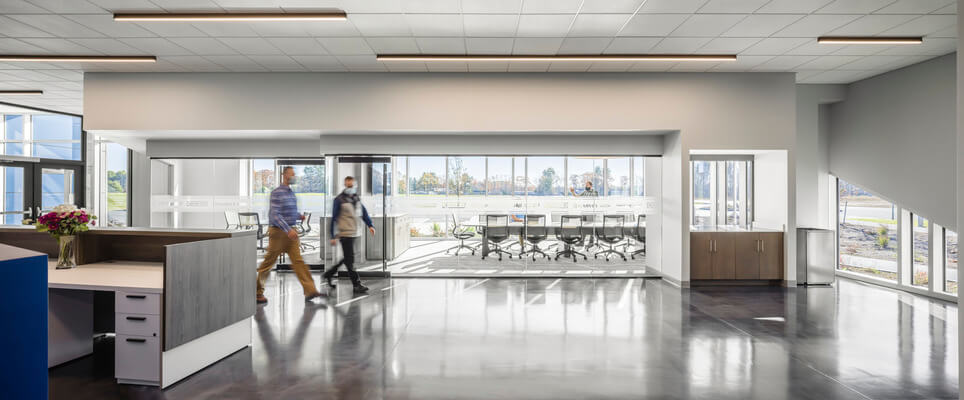
Earlier this month, SMMA's Corporate & Commercial Studio Leader Jonathan Merin had the opportunity to participate as a panelist in Bisnow's most recent webinar, titled "Reopening the Workplace: Leadership's Role in Fostering New Social Norms as Workplaces Reopen." Bisnow seeks to connect tenants, landlords, brokers, investors, architects, general contractors, engineers, and public officials. Merin was accompanied by industry colleagues from firms, including CBRE, Gensler, Knoll, Stantec, and Zendesk.
The panelists focused on change management, namely, how leadership should prepare for reopening workplaces in a post-COVID world. Speakers answered questions related to ensuring health and safety, mobilizing the workforce to return to the office, and psychological considerations and policy development. As one can imagine, the role of architects and engineers is significant in developing workplace environments that are safe and engaging. SMMA has a long history of designing innovative workplaces for various industries and clientele, from Science and Technology to Corporate and Commercial. Our staff has been focused on helping clients adjust throughout the past year as the workplace needs have changed.
Merin's top takeaways for business leaders include:
- The role of the office will continue to be crucial to the ecosystem of work. However, our time working remotely has challenged the long-held assumption that all work must happen in the office. As we think about returning to the office, we must think about how we utilize our spaces to best support new functions. For example, with a hybrid workforce, an organization might focus on bringing teams into the office for project-driven group work. In that case, the focus is placed on adjusting communal spaces to accommodate the returning employees, rather than individuals' workspaces.
- Redefine success for your organization. We found that for many, productivity looks different now when compared to the last time in-office work was the norm. Whether it is a change in the hours of operation, a difference in meeting style, or reworking scheduling and deadlines, we know that moving forward will not be more of the same. It is in the organization's best interest to look at how they define productivity and success, considering how things have changed to plan strategically for the future.
- Engage staff with intention. The past year has been challenging on many fronts, but it has also allowed people to better identify the things that matter most to them – health, safety, family, and work-life balance. The move back to the office significantly affects colleagues and teammates, posing potential losses to their daily lives. Encourage staff to be engaged in surveys and other research modes to create new workplace policies and take their suggestions into account. In doing so, leadership can better adjust for their workforce's specific needs while ensuring employee satisfaction.
Learn more on bisnow.com or email Jonathan with any questions.
